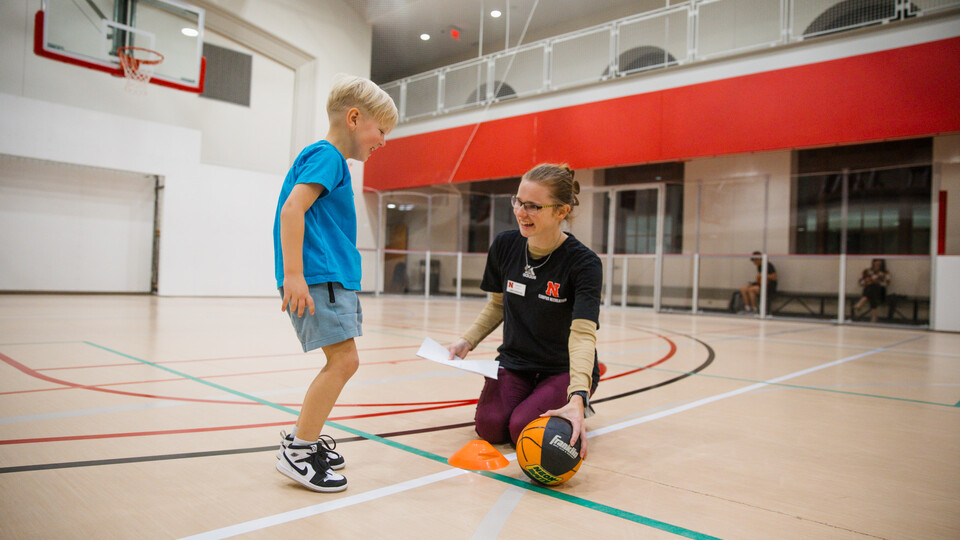
From the clinic to the court, Klein applies speech pathology work
16 Jan 2024
As an Itty Bitty Sports coach, Hailey Klein’s campus job allows her to apply speech-language pathology techniques on the court in tandem with her clinical work through the College of Education and Human Sciences’ graduate program.
When learning any new skill, starting small is usually the right approach. As an Itty Bitty Sports coach at the University of Nebraska–Lincoln Campus Recreation Center on East Campus, Klein helps little kids start (very) small with sports.
“Itty Bitty Sports is a program for three to five years olds to learn basic sports fundamentals,” Klein said. “They learn how to bounce a ball, how to share, how to run appropriately — things that work across all sports.”
Itty Bitty Sports is taught by Husker student workers at Campus Recreation with a help from the kids’ parents. For Klein, a graduate student in speech-language pathology, it is also an opportunity to get some added experience in communicating with the groups she most wants to help in her professional career.
“My biggest interest in speech pathology is early intervention, and this opportunity targets that population specifically — it just felt like my bread and butter,” she said. “Being able to take the communication skills I’m learning here and use them professionally in the Barkley Speech-Language & Hearing Clinic has been really cool.”
The Barkley Speech-Language and Hearing Clinic on East Campus is an active clinic where Klein and fellow speech-language pathology students work with patients with communication disorders. Being an Itty Bitty Sports coach allows her to apply some of these communication skills she’s learning in the clinic on the court as well.
“It’s a lot of repeating the same language over and over again,” she said. “You often need to show them what you’re talking about. Once you apply the motor aspect to the language, they start to understand. Being able to practice modeling language for them has been a really great experience.”
When modeling language, Klein has learned that simpler is often better. Which, often, means talking about animals.
“The biggest thing I’ve learned is just how to talk in kid terms,” she explained. “We do a lot of running like a jaguar or hopping like a bunny. To them, that’s something tangible that they can see, recognize and have fun with.”
College of Education and Human Sciences
Special Education and Communication Disorders
Thriving Young Children
Comprehensive Health & Well-Being